Language Based Communication Boards
A little speech talk here.
Wait! Don’t go! You just might learn something awesome. 😉
Language development of a typical child includes expressing:
- 5-20 words at 18 months of age
- 150-300 words at 24 months
- 900-1000 words at 36 months
Although the vocabulary expansion throughout early childhood is tremendous, about 80% of everything that is expressed is within a core vocabulary. This means that with only a limited number of words, a person can express anything they want to say, albeit in a round-about way.
This information is incredibly powerful for individuals who are non-verbal and rely upon Augmentative Communication. It would be impossible for them to carry about a dictionary to point to every vocabulary word they need to communicate (and that assumes the individual is literate). But, if that person can learn a core set of vocabulary words and how to combine those words in unique ways, they can express themselves clearly and creatively. They can generate novel messages about anything that they want to say.
How does one learn these vocabulary words? A typical child hears spoken language and after 12+ months of being bombarded with verbal words, begins to use spoken language. A non-verbal individual also needs to be bombarded, but not just with verbal words. They need to have thousands of models of augmented communication.
Take a look at the fabulous free boards created by Gail Van Tatenhove.
Initially, you might introduce a child to 30 core vocabulary words:
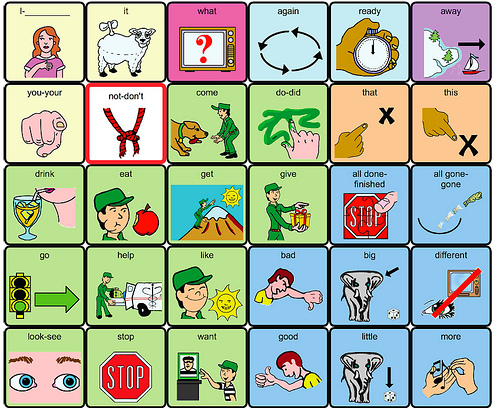
Your modeled speech while playing blocks might include you saying and pointing to pictures like this:
Ready?
Get it.
I go.
It big.
I want it.
You go.
I finished.
As the child expands his understanding of vocabulary, abstract language, and word combinations, their core vocabulary will grow as well.
Here is a 112 word core vocabulary board:
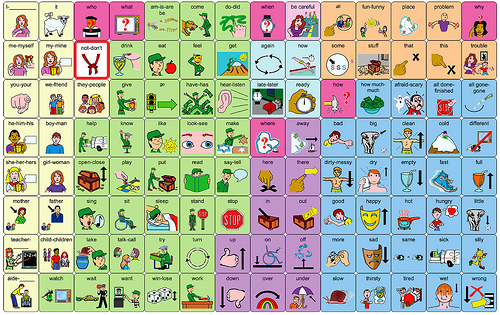
Now the block activity might include both parent and child pointing to pictures to express:
I go now up.
I like big stuff.
Up, up, up, big.
You not go. My turn.
I want big this on be careful.
Put on here not there.
Go up not down.
You trouble. You down. I sad.
Okay, so it’s not all that grammatically correct. But WOW! Think of all the ideas you can express with these words.
Watch this video clip of a man using core vocabulary on his Augmentative Communication device to talk about a difficulty he was having:
Learning key vocabulary and combining words is one of the hallmarks of language. It paves the path for high technology Augmentative Communication. It allows kids like Micah to actively make decisions about their own lives.
Van Tatenhove’s Pixon Project Kit will be hopefully released later this spring. It will focus on a systematic way to teach language concepts with communication boards. I am giddy at the thought of having this material in my classroom.
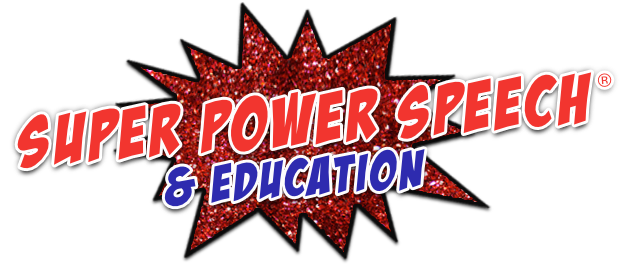
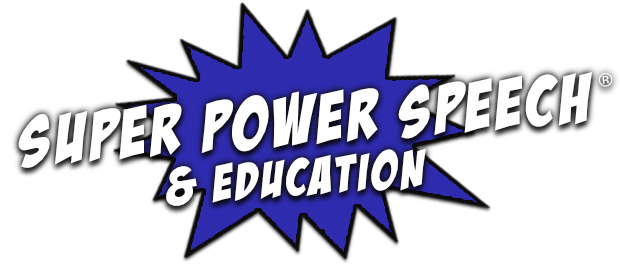

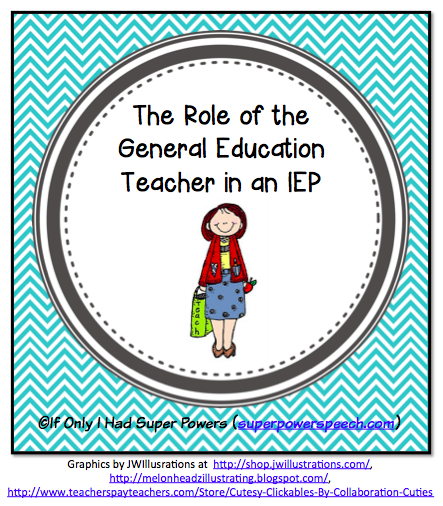

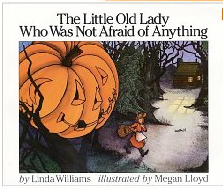
WOW….very very interesting! I feel like I’m in school. My Macy Li is now 21 months. We adopted her at 12 1/2 months. I’m amazed at how many words she says. Although a few are not pronounced exactly correctly (“dink” for drink is one example), she repeats EVERYTHING she hears us say, including our gestures, etc. It’s hilarious hearing that little southern accent coming out of that Chinese face. So cute. My next oldest child is now 12, so I’m not around many toddlers, as we live in a teenage world. So, I’m glad to hear it sounds as though she’s definitely on target! Thoughts?
Thanks, and I always enjoy your blog and your humor!
Thanks for this timely post!!
My son would be considered in the range of having severe to profound speech deficit. He is verbal but on a low level and is highly unintelligible. He uses gestures alot when trying to communicate and when we know the context then the gestures are effective (for the most part)
He is now 5.5 yo.
Reading your post gave me a clearer idea of what a communication board looks like and the way it can be used. Our neuropysch just finished an eval on him and strongly recommends the use of a augmentive device of some sort. Do you think sing language is another good option? OR Are the boards the best way?
Thanks again for this timely post.
Which brings me to the book “Rules” which you would love.
best advice I ever got – speak to your baby – no matter how silly you think it is – just speak out loud whatever it is you are doing!!!!
Wow … fascinating!!!
Very cool post! I’ve seen Boardmaker being used a lot, but not the Tatenhove ones.
I’m crying. Real tears. Did you SEE the smile on that face because of the voice The Box provided? Because he could tell a story? Because he was now independent enough to communicate on his own and solve problems? God bless the people that make that happen. And may they see smiles like that every day of their lives.
Just today I ran across an IPod/IPhone ACC application called IConverse. It only has 6 icons but the potential is huge.
I guess there really IS an app for anything. lol
I have seen these and we are using some thing along the same lines for Lia. At this point we have no idea what Lia’s main communication will be but we have TONS of options. 🙂
Nice blog, This is my first time visiting here.
regadrs,
Kenali dan Kunjungi Objek Wisata di Pandeglang
This is great! I get the whole core vocab thing now. I have Go Talk Now AAC app. I have been searching the web trying to figure out how to layout the core vocab for my kid, he is 6 and had Down Syndrome. We have been successful stumbling along on Go Talk Now with “Boards” i ahve made.
Can you point me in a direction? ThaNKS!!!!!
lIZ
Thanks so much for your post! Do you know any templates out there that have the same format as the Pixon 112 board, but use Boardmaker symbols?